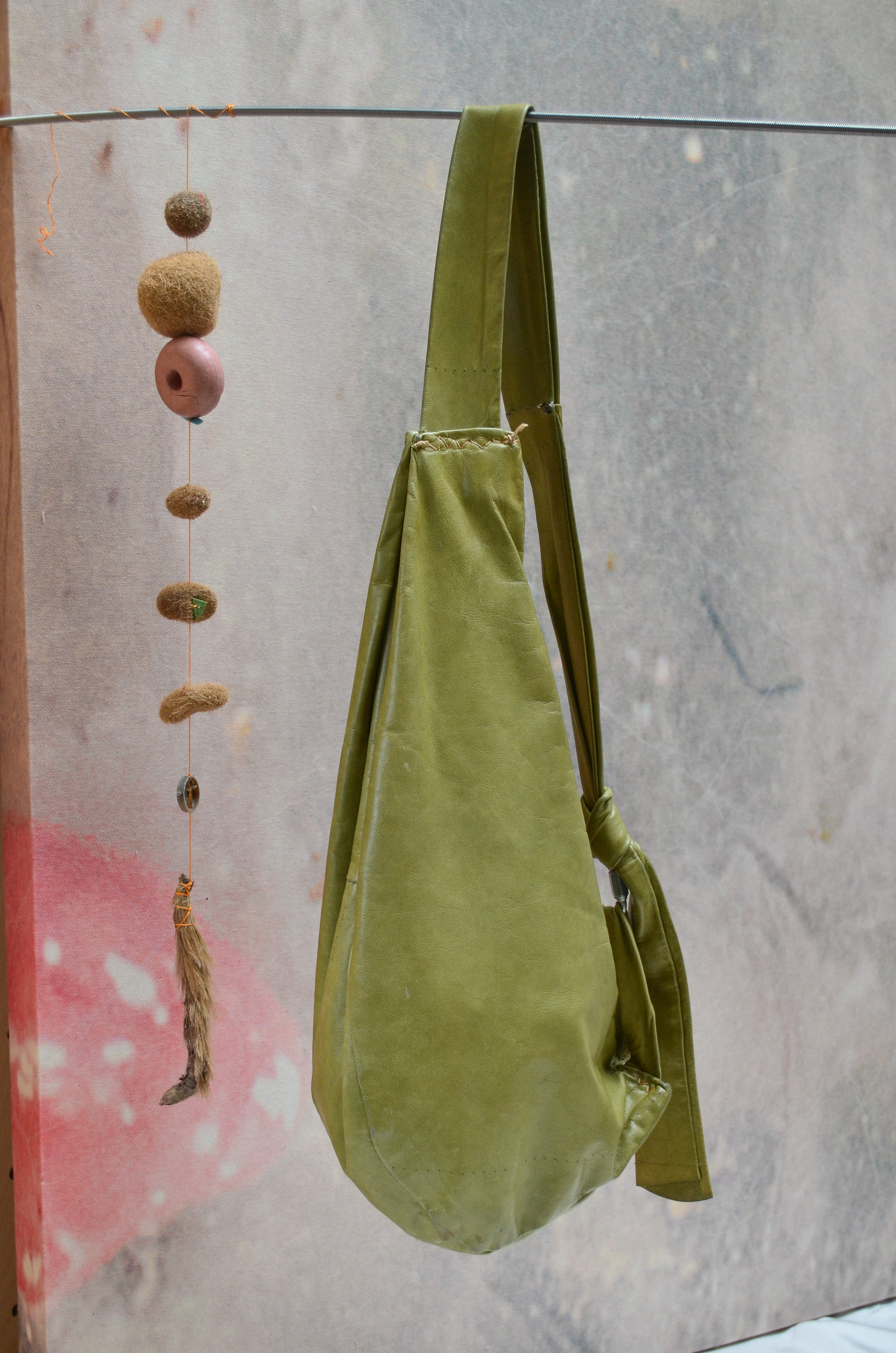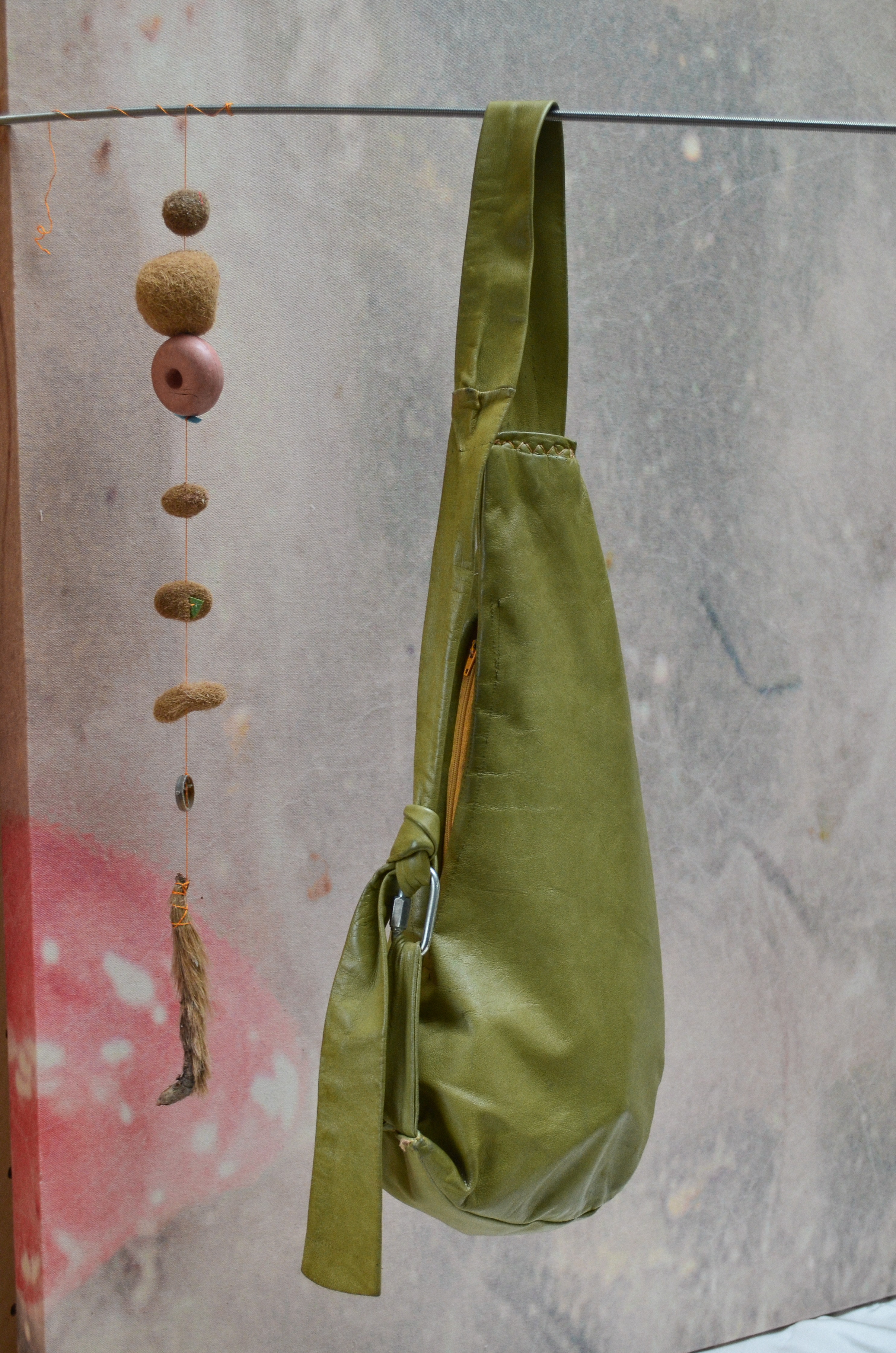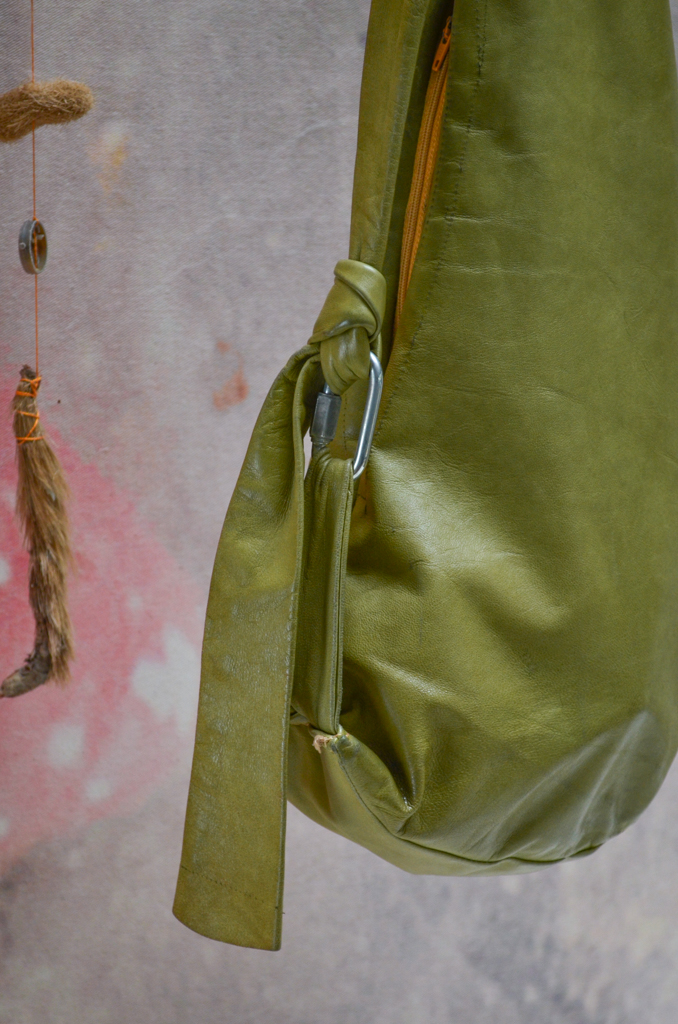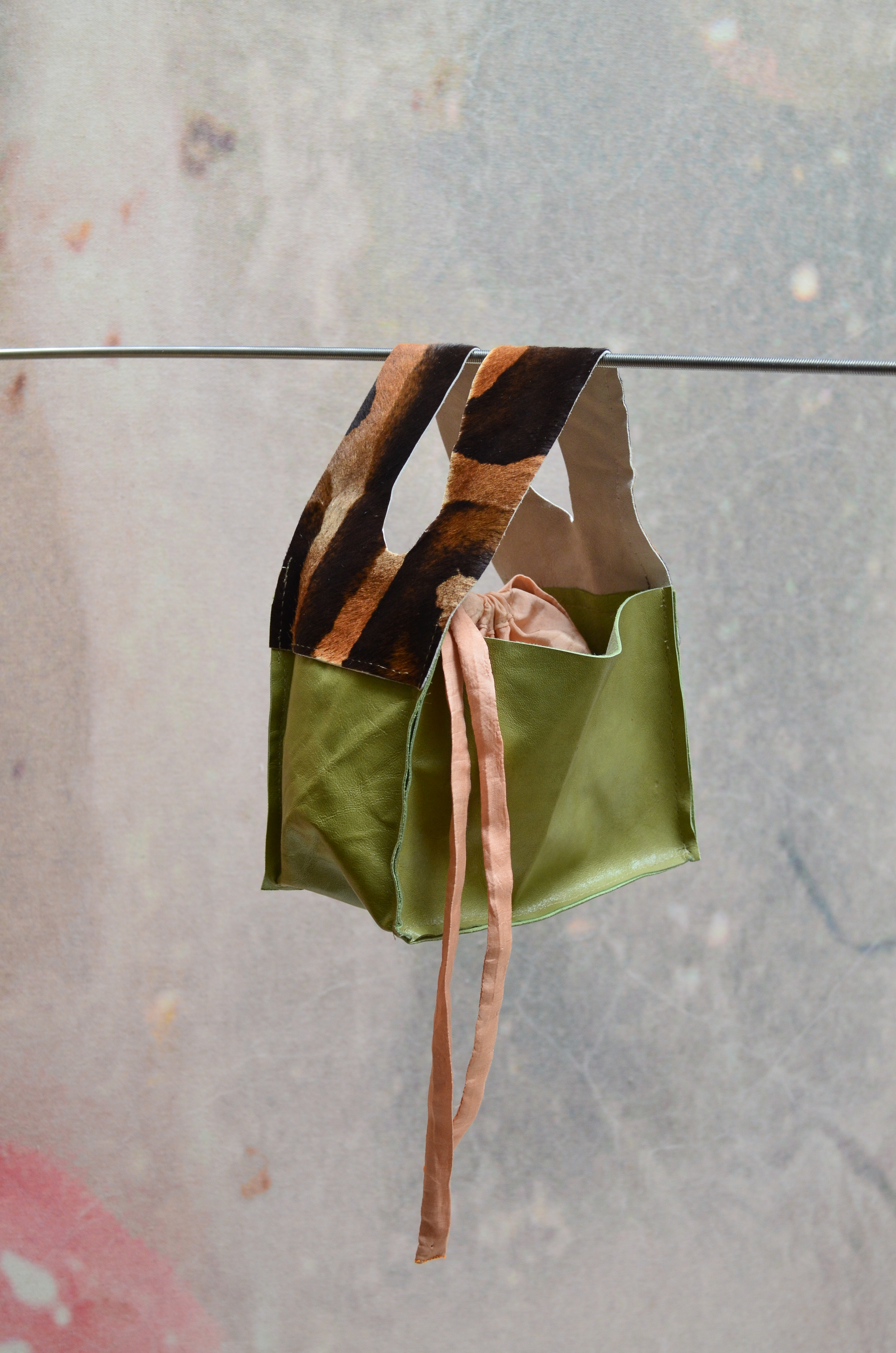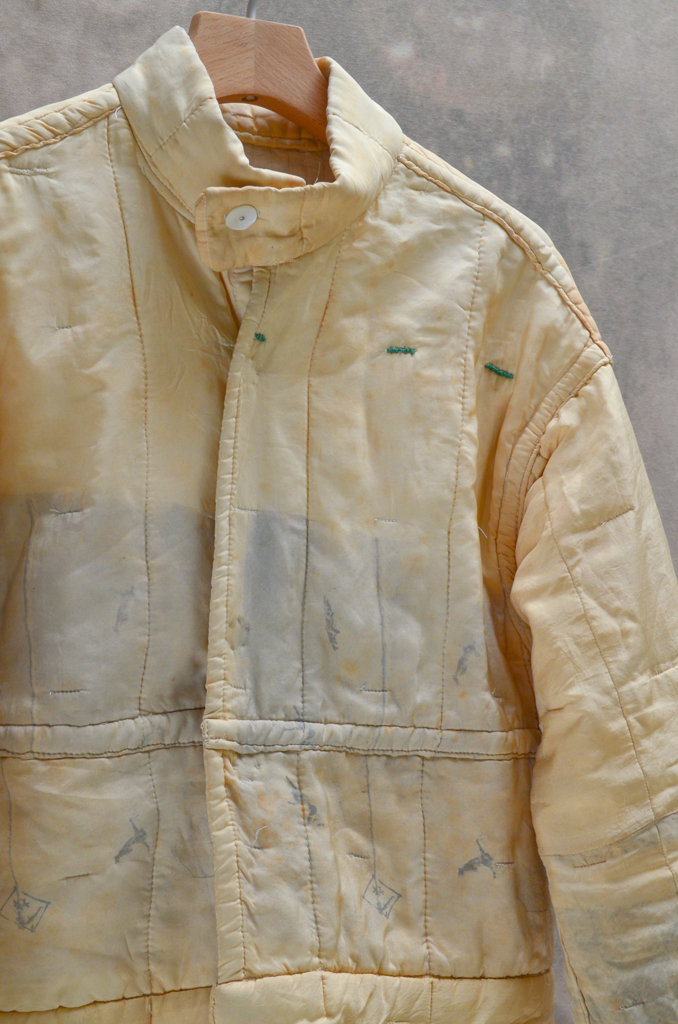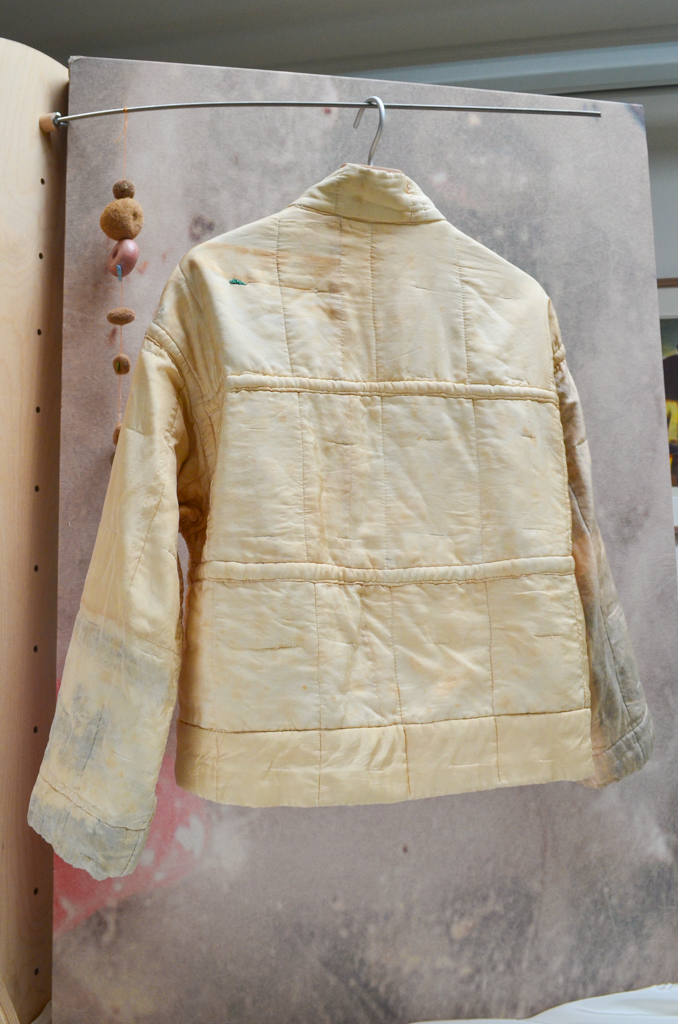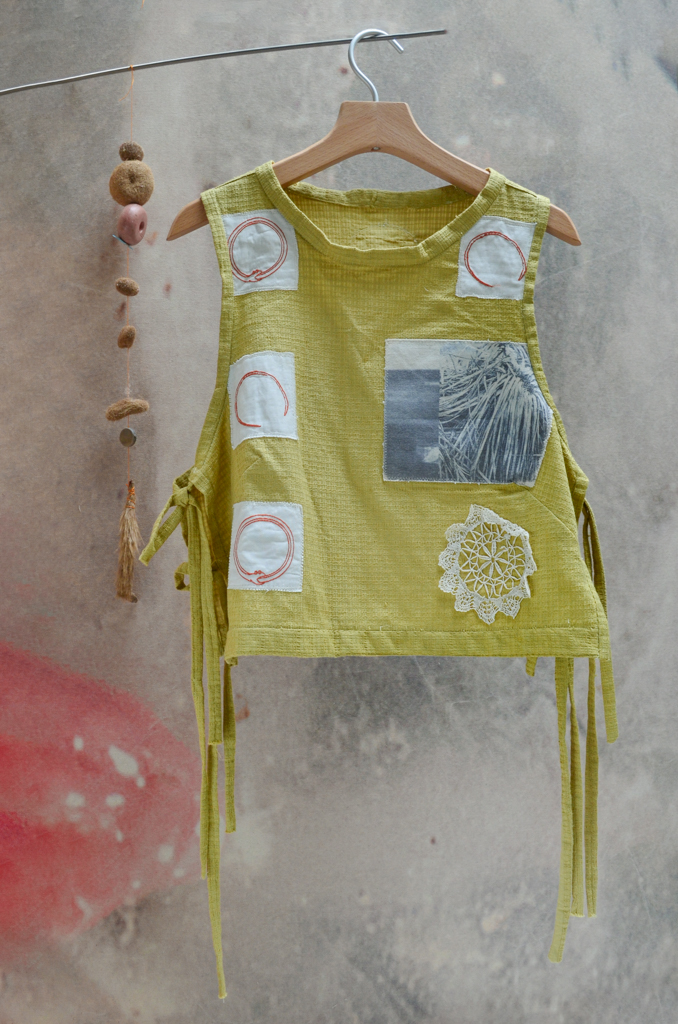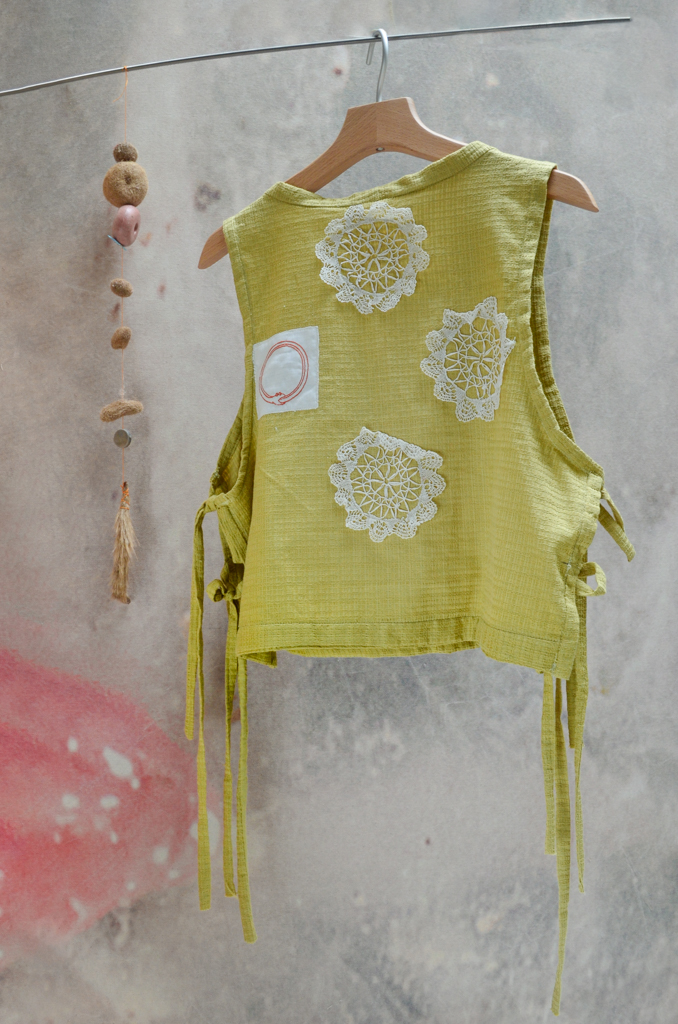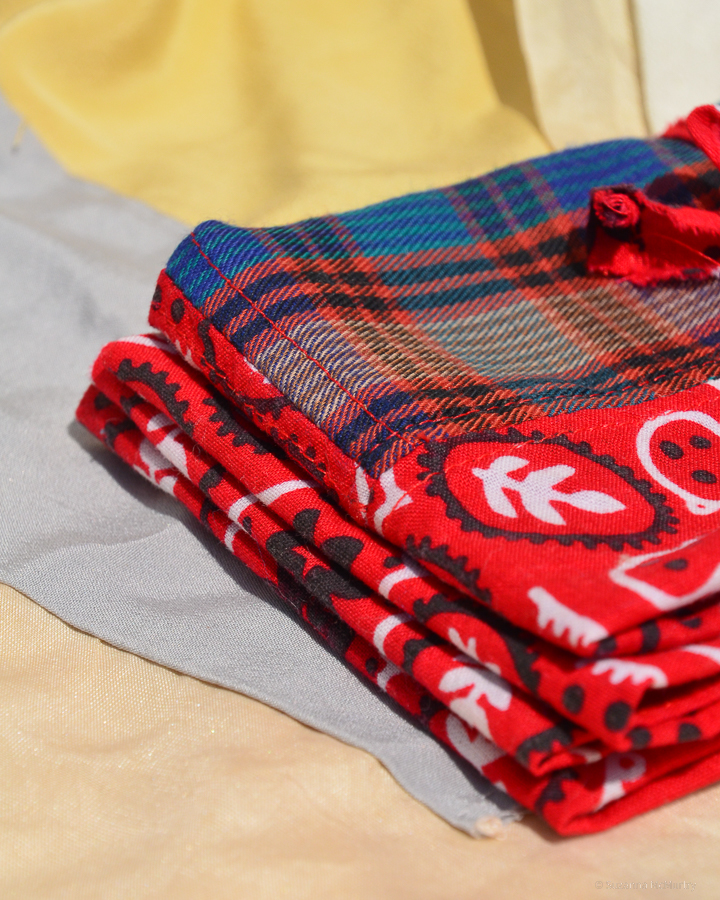Design in public policy
2023 - ongoing
As a designer at Policy Lab UK, a cross-government team, I planned research, facilitated workshops, communicated with policy teams & stakeholders, coproduced reports, & contributed to innovation of our methods. I played a key role in projects that explored using serious games in energy regulation development, systems change theories in improving social care, film ethnography in building evidence for increasing opportunities for young people, & more.
Due to the sensitive nature of government work, materials, events and research produced on many of my Policy Lab projects are not accessible to the public. The following are a selection of open access projects.
Systemic
Conceptualized by Alex Fleming and Vanessa Lefton of Policy Lab and game designer Mateo Menapace, Systemic is a systems-change game to be used by policymakers as a tool for breaking down complex policy issues. I brought the game to life with a visual identity and print-to-play format in 2023.
Systemic has since been played all over the world: from Camden town council to Japan, where it was translated for the country’s Systemic Design Day.

The materials to play Systemic can be downloaded at the end of this blog post.


RegBox

Funded by the Policy Profession Unit, RegBox was a design research project exploring the use of serious games in understanding regulatory challenges and stress testing ideas for change. The goals of the project were to research examples of serious games in policy, empower policymakers to use game mechanics, produce a few print-to-play prototype games, and bring together a community of practitioners.
Read the Policy Lab blog post here.
Workshops and teaching
2019 - 2025

Featured above:
During orientation week for new fashion students at University of the Arts London, natural dye expert Florence Hawkins and I taught a workshop on the Central Saint Martins roof garden. To present nontoxic, sustainable alternatives with tangible sources (like the leaves growing in a raised planter bed on the roof above the studio) just as these young people enter an intense period of learning and defining their design approach, felt critical.


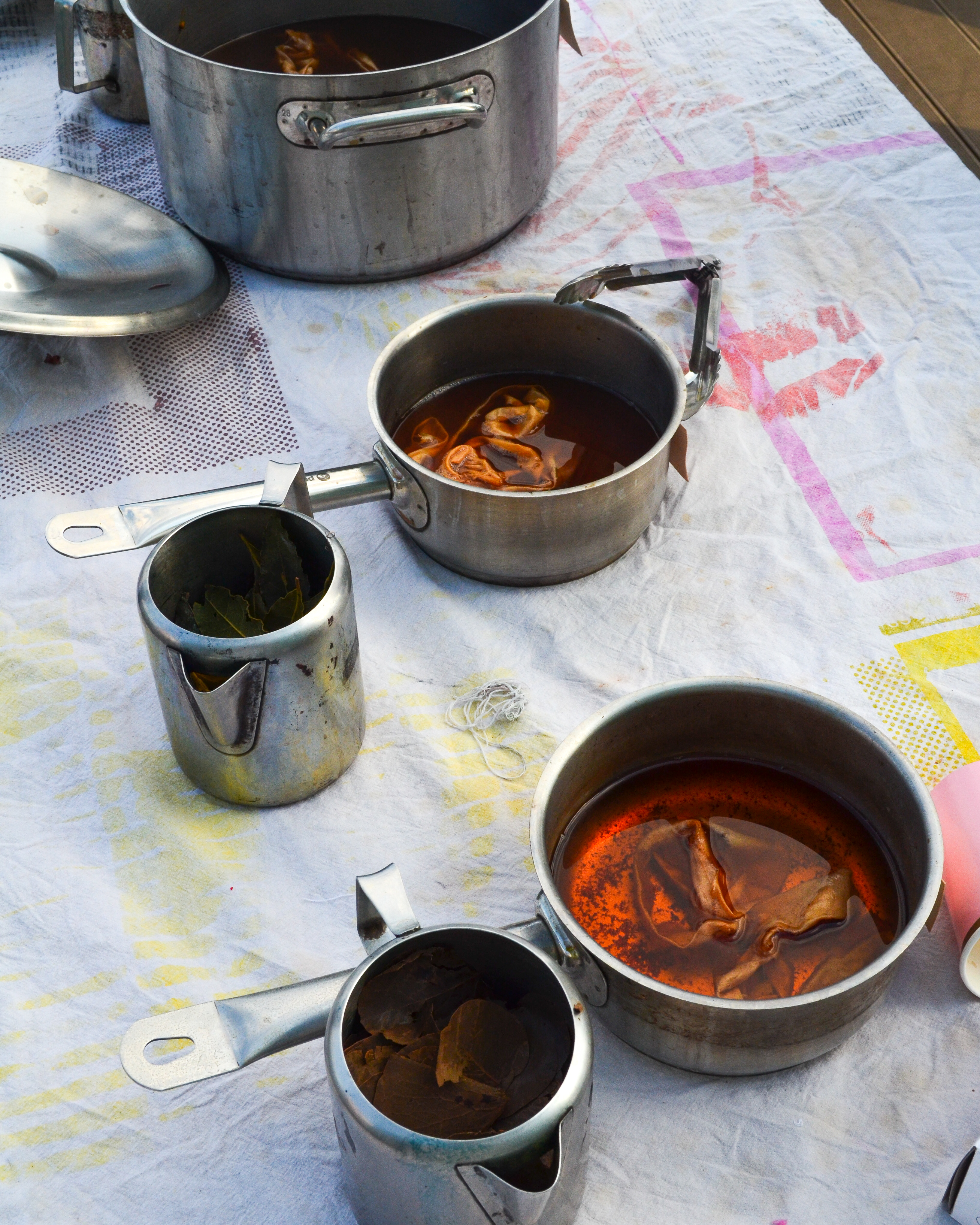

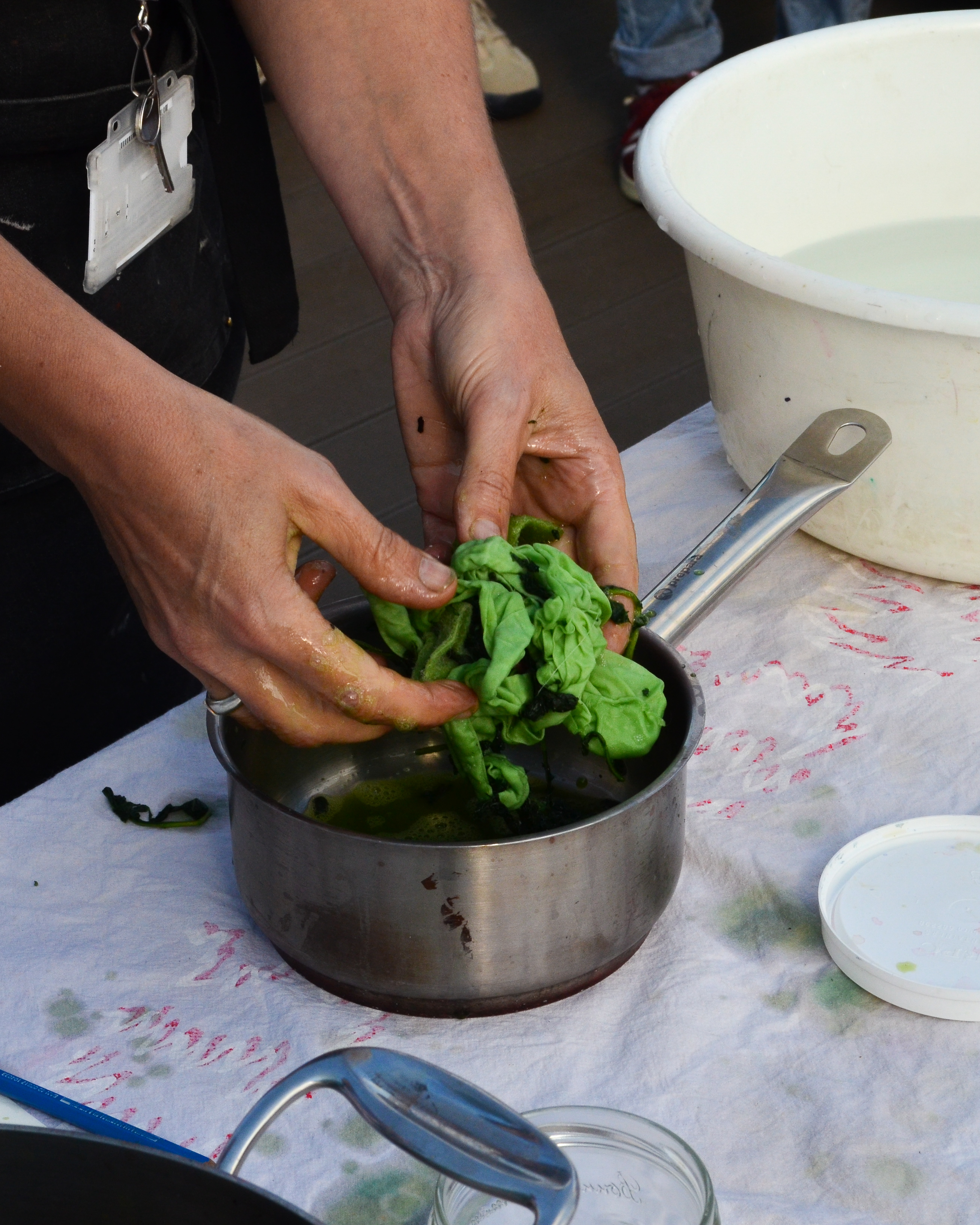



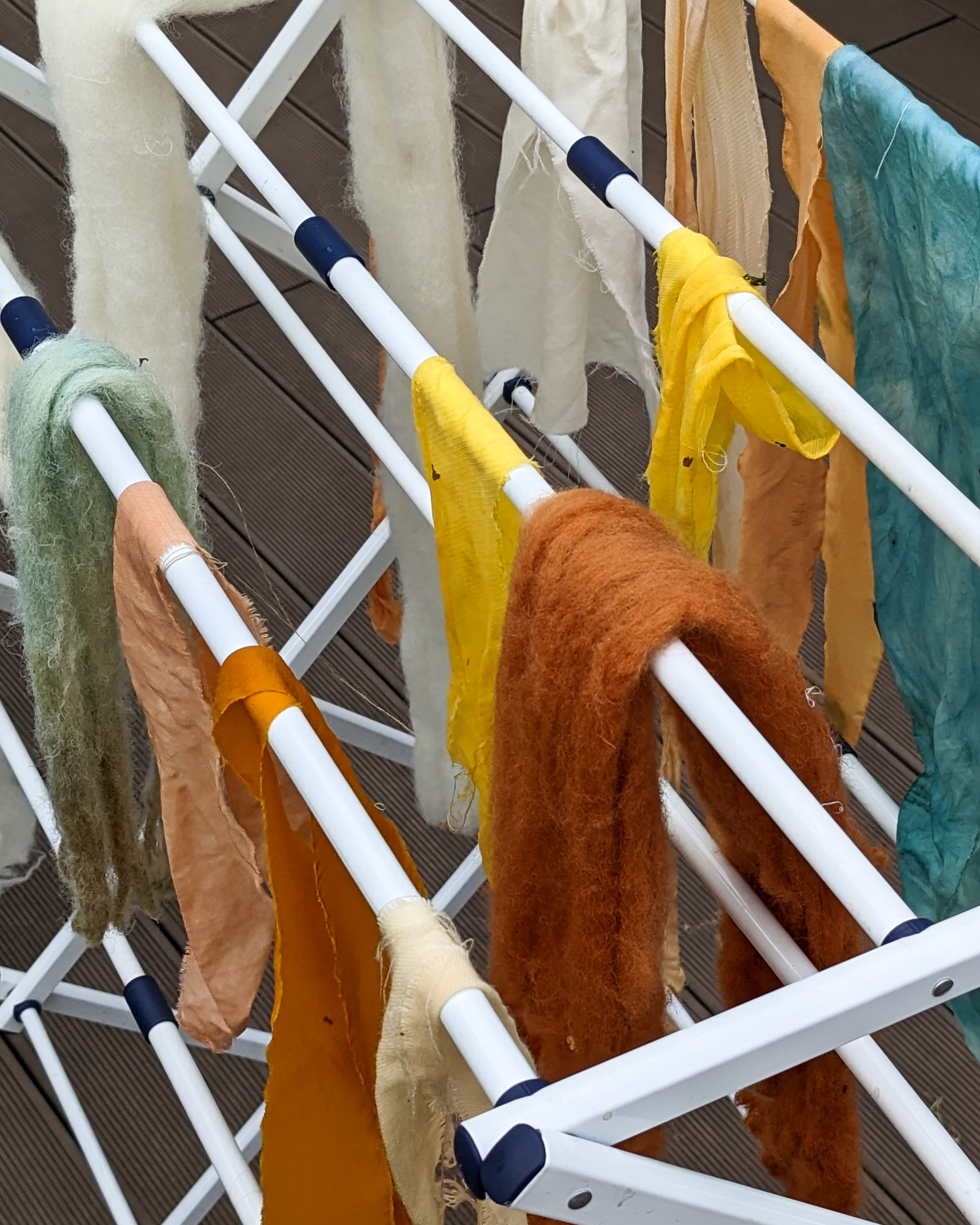
As a workshop leader, I aim to co-create group dynamics where creative confidence is accessible to all. Recently I’ve been hired to lead workshops in natural dyeing & color modification, sustainable design, plastics upcycling, & sewing in community centres, within secondary school art programs, & at conventions.
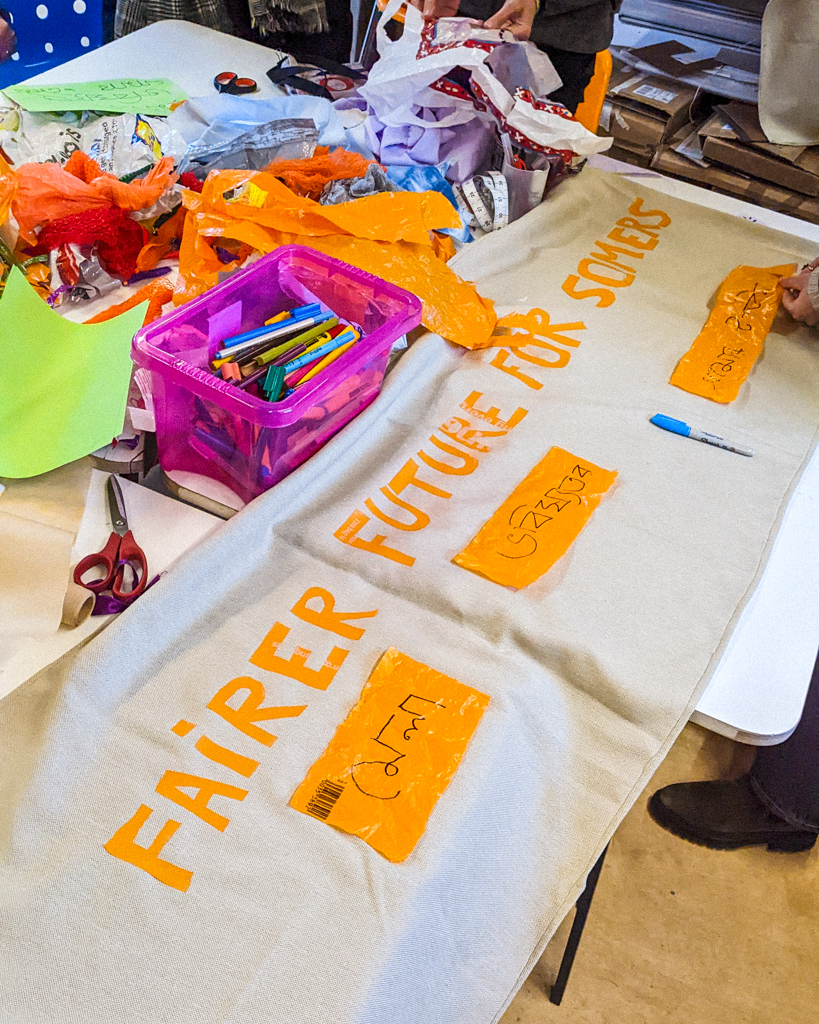

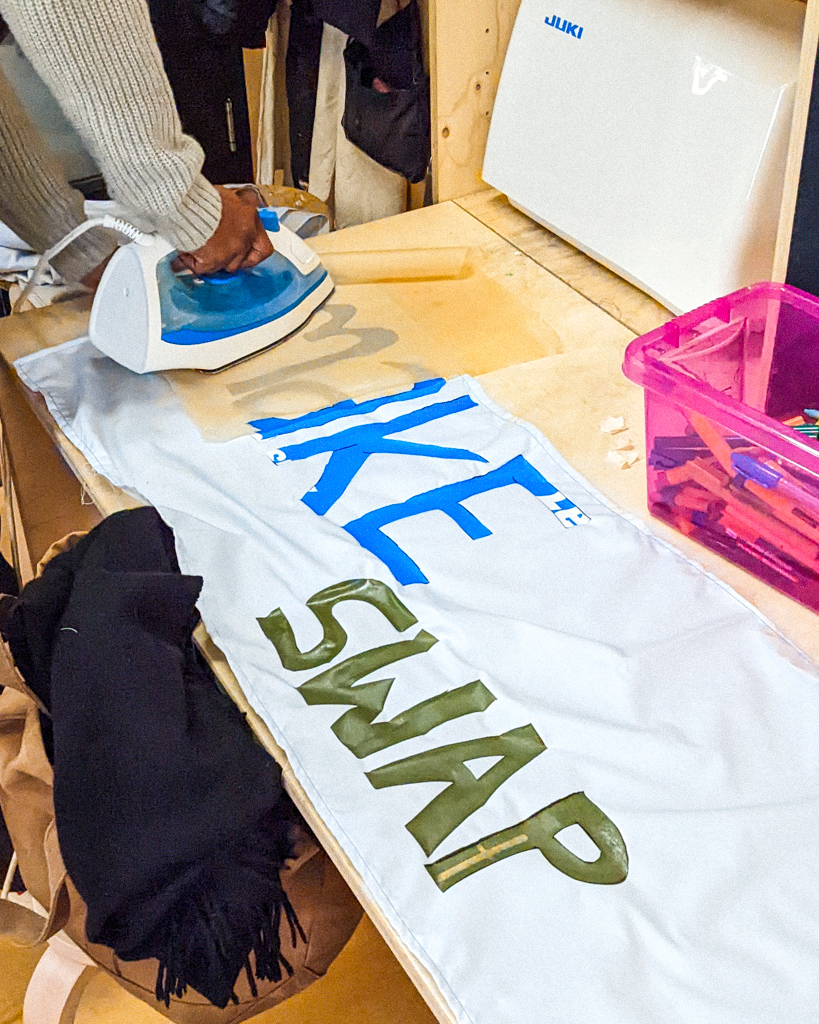

The above images are from the third Climate Action Market at the Chalton Street Market in Somers Town. The plastics upcycling workshop was designed with Coline Le Quenven and Afterlife Practice.
Living with Wildfire
2022A sculptural mechanism which releases fungal spores during a wildfire to jumpstart soil remediation and symbolise regeneration in a changing bioregion.
Changing winter and summer conditions will increase UK wildfire risk by up to 50% by 2080. We urgently need to [re]adopt a more nuanced mindset around fire to understand that in varied moderation, fire is a vital part of healthy ecosystems. As images of devastatingly orange skies from the most fire-prone areas around the world make loud headlines, can we preempt localised wildfire doom in the UK and find hope by bringing preventative and remediating measures out into the open?
Living with Wildfire intro film
cinematography and editing by Maël Hénaff
“We need not just reseeding, but also reinoculating. Recuperation is still possible, but only in multispecies alliance, across the killing divisions of nature, culture, & technology & of organism, language, & machine.”
– Donna Haraway, Staying with the Trouble: Making Kin in the Chthulucene, 2016
As much a speculative proposal as it is functional, Living with Wildfire offers a self-contained, fire-activated mycoremediation system in an art object, belonging on the perimeter of a home or civic building in a British rural-urban interface zone.

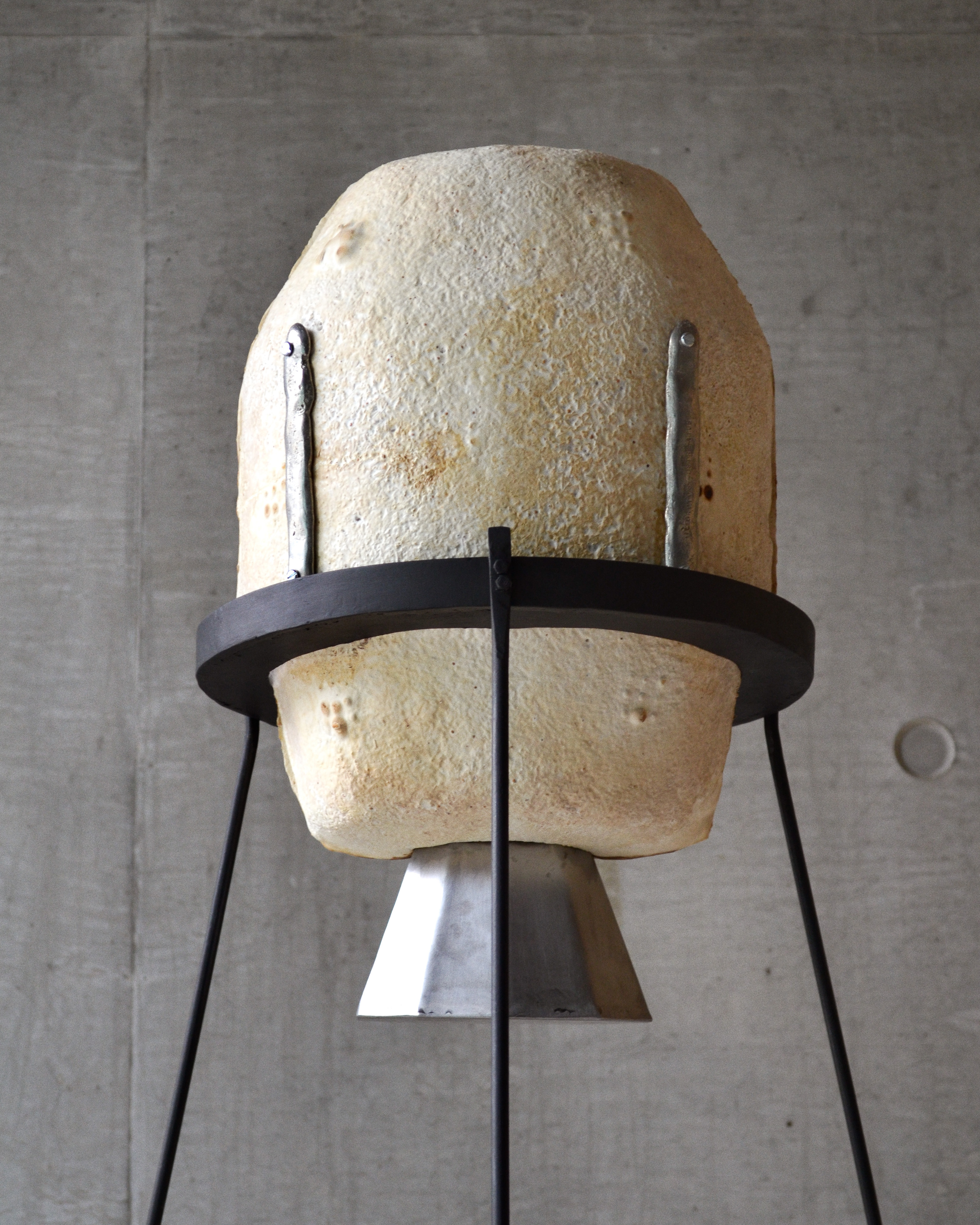
The form is a mycelium sculpture, adorned with descriptive tags made from thick pieces of lead-free pewter, held up on a steel frame. This mycelium (the interwoven root-like hyphae that make up the majority of fungal organisms’ biomass) is grown on silica-rich substrate to enhance its natural fire-resistance. Inside this protective form is a steel vessel, sealed by a cork that contains billions of dormant spores of oyster mushroom, or Pleurotus ostreatus.
“In time, the spores take hold, consuming charred plant matter & pollutants alike. The sculpture’s possession & eventual use are a performance of sympoiesis between homeowner, their toxins, fungi, and water.”
– Living with Wildfire, critical text
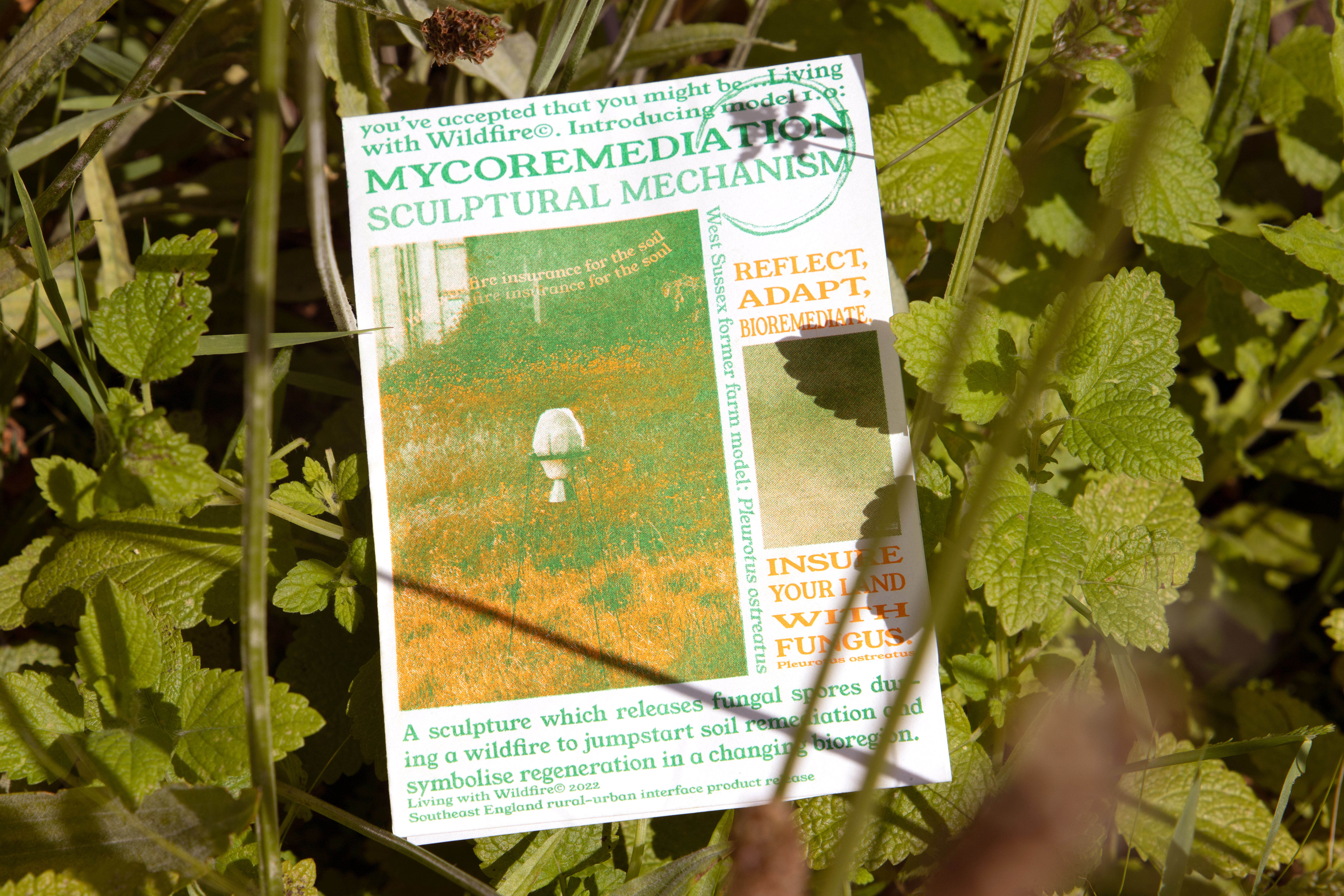
If a wildfire reaches the brush piled underneath the frame (gathered from fire prevention forest thinning), steam builds in the vessel, triggering a ‘spore explosion’ that inoculates the surrounding earth and detritus with Pleurotus. The fungi will aid in erosion prevention and begin to break down toxic persistent organic pollutants (POPs) that are found after fires in partially developed landscapes. The pewter tags melt quickly, flowing into the steel rim below, casting a remembrance of the event.
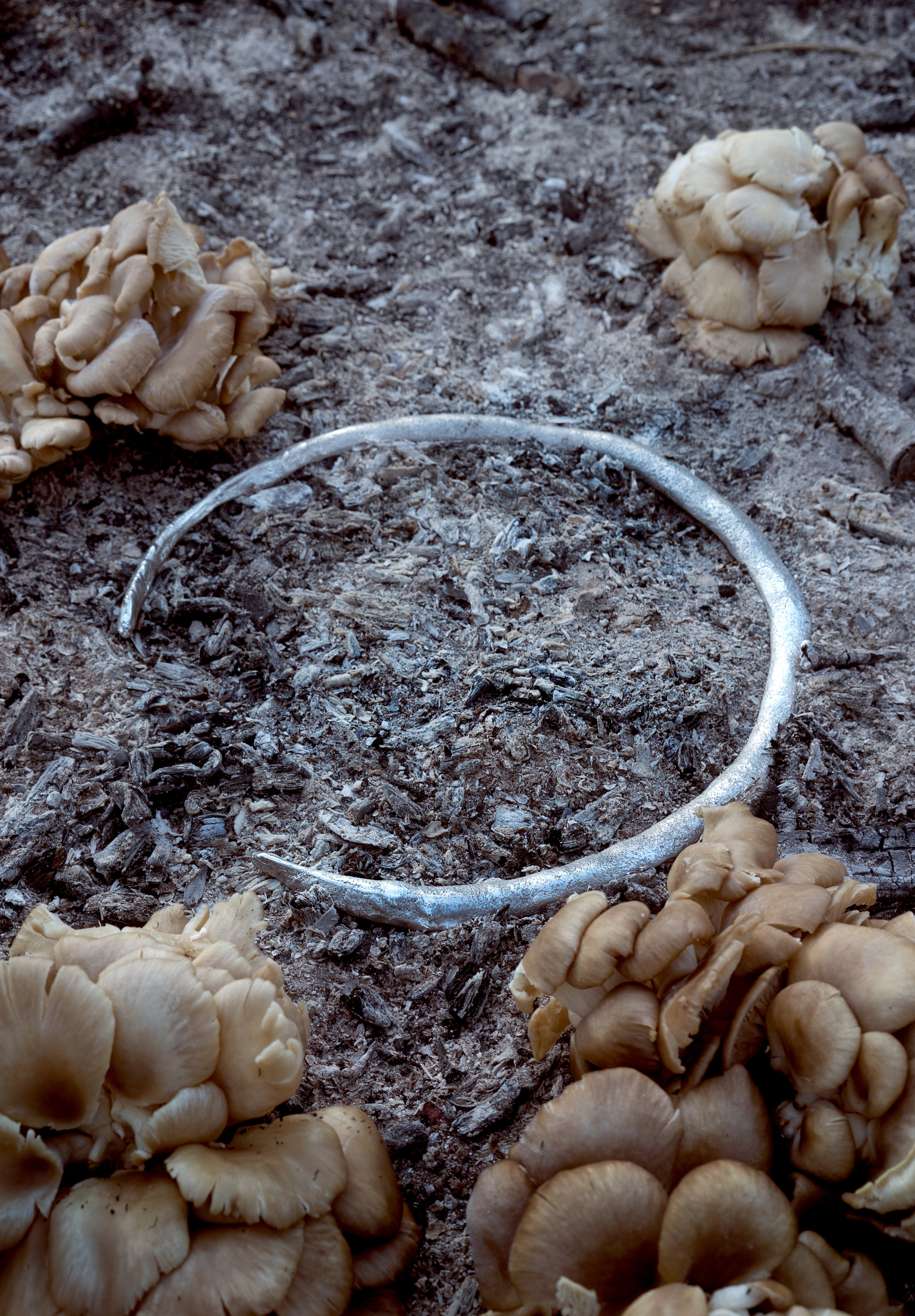
As an ecologically attuned art piece and small-scale, decentralised wildfire insurance plan, Living with Wildfire encourages reflection, adaptation and bioremediation, while leaving room for the grief that comes with witnessing a changing bioregion.
“In a
matter of years, the UK will be ill-prepared to handle wildfires. It must
consider what it might need in the future.”
– G. Rein, Professor of Fire Science,
Imperial College London (2020)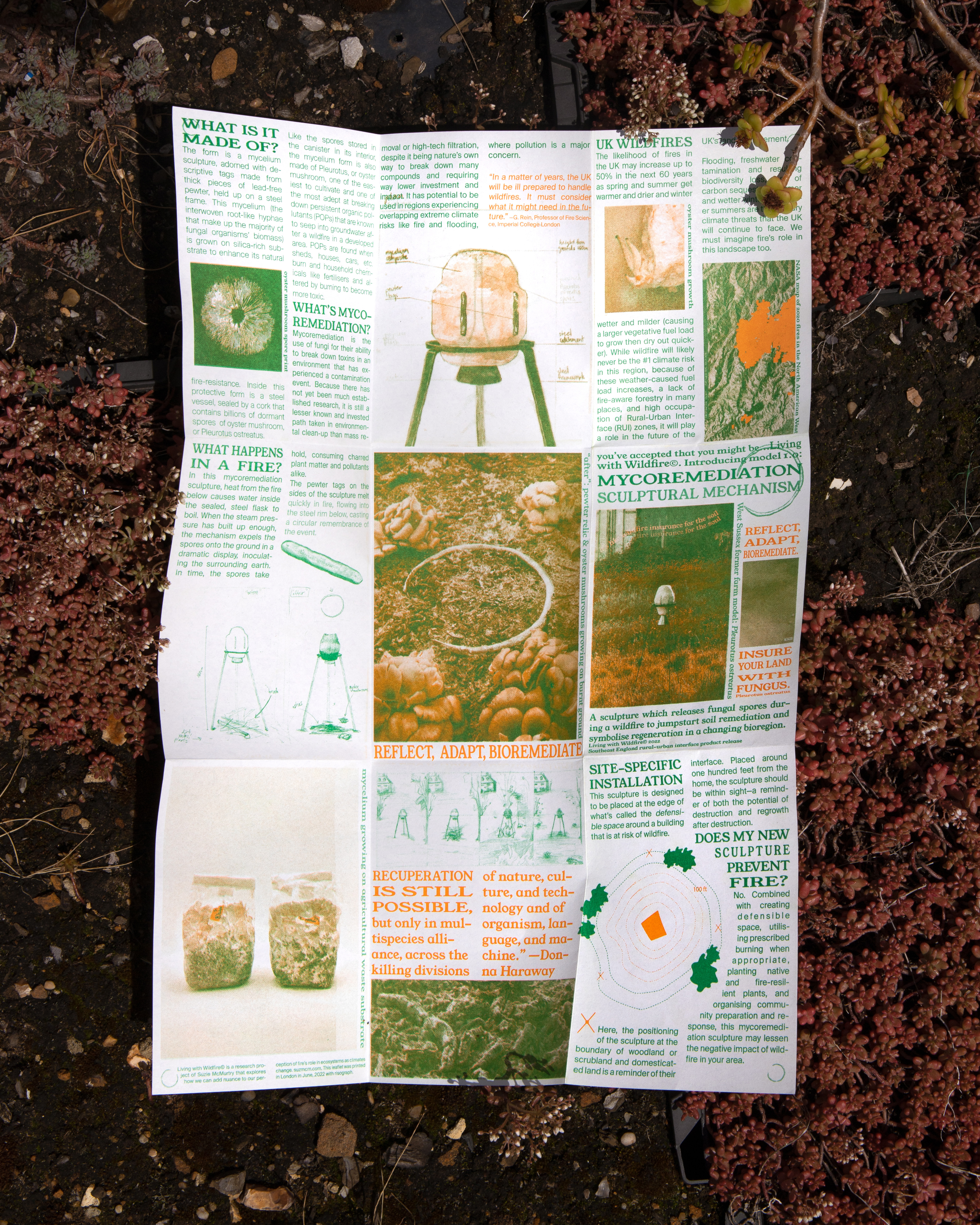


– A.C. Scott et al., ‘The interaction of fire and mankind: introduction’ (2016)“Fire may not only have an impact on the vegetation (and houses built within the burnt area), but is also a threat to human health from fire-produced smoke & fire’s influence on post-fire erosion, flooding & its potential to contaminate water supplies.”
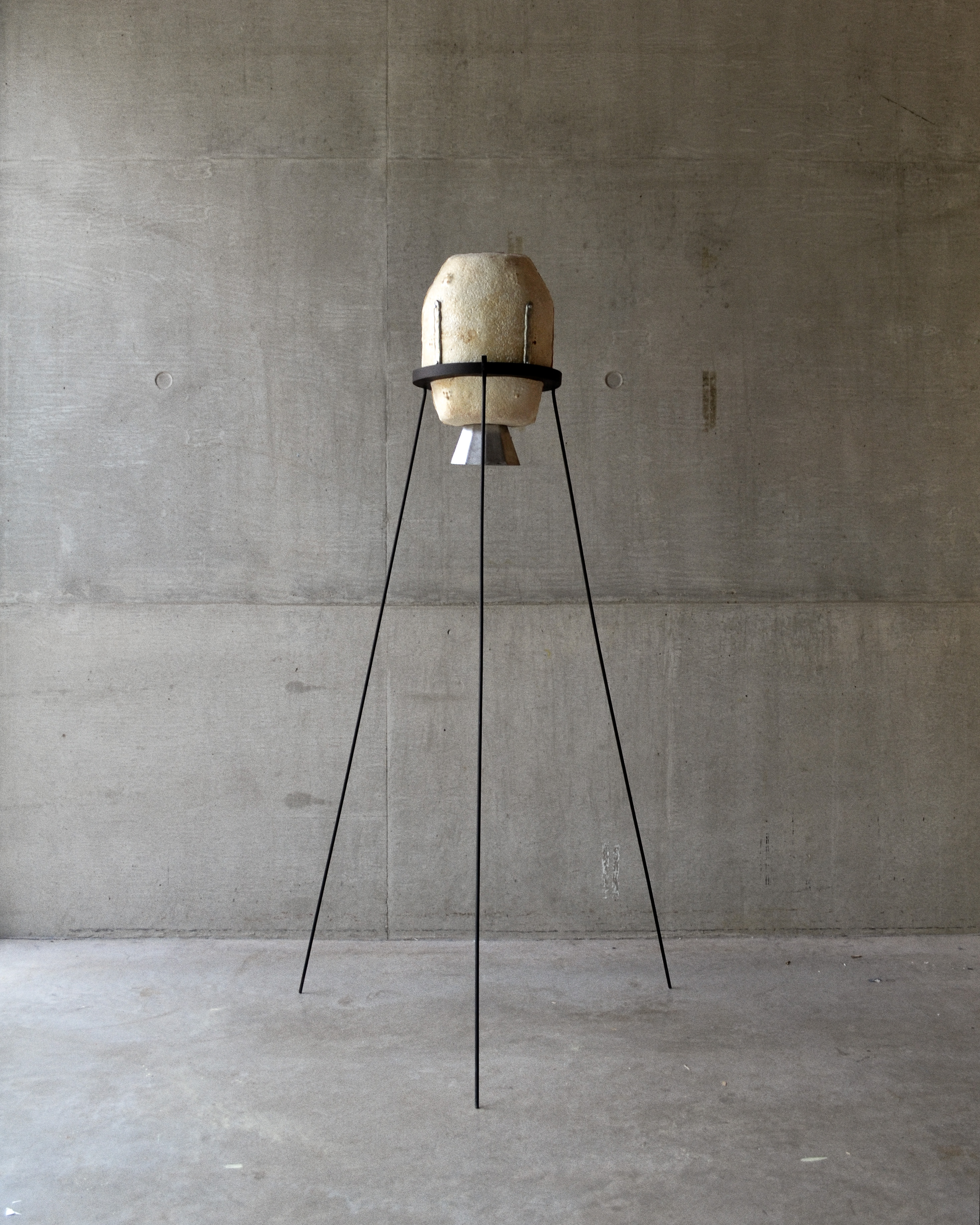
To read more about my process, research, outcome, and inspiration, see my publication Living with Wildfire.
featured in:
Dezeen
Dutch Design Week 2022

HS2 Phase 1f: Deep Listening
2020
High Speed Two (HS2) is a new rail network that will eventually connect London, the Midlands, the North and Scotland. HS2 Limited maintains that the new system will provide a lower carbon alternative to regional road and air travel1, despite calculations that even at its 120-year lifespan mark, the complex network’s construction and operation will not have been carbon neutral2. Calling HS2 “the biggest environment project in Britain”, the government grant-in-aid funded company has hired teams of experts to plant trees, create replacement habitats, salvage valuable soils, conduct ongoing surveys of ecosystem health, and more 1. This sounds thorough, but because of high-speed track requirements, there is not enough flexibility to avoid destroying a certain number of ancient oak woodlands, homes, or habitats for endangered butterflies8.
To summarize the main criticisms of HS2: the carbon emission reduction estimates are misleading, there is irreplaceable habitat along the route (I.e. one cannot make “new” ancient woodlands), it will benefit the wealthy disproportionately3, and the now estimated £106bn budget is better spent on social and medical services. There have been high-profile protests against the project since at least 2018, with confrontations streamed online between camped-out “tree protectors” and contractors4. Despite increasingly salient criticisms, almost all signs point to at least Phase One of HS2 carrying on5.
The HS2 Phase 1f: Deep Listening website explains that HS2 goes forth and has recently contracted a company specialising in “deep listening” surveys on construction sites. It has become clear to HS2 Ltd that exclusively quantitative data collection is not sufficient to monitor and promote a holistic thriving of the region at the different stages of this physical transition. They will gather rich, qualitative data from organisms along the route, making recordings of rivers, cacophonies of birds, rustling leaves, and individual badgers. The announcement of the survey also represents an effort to evolve with the language around environmental sustainability. As an expression of values conveyed through narrative becomes more critical to positive reception of corporate projects of any scale, their marketing and execution will become more creative and expansive.

If this deep listening project were implemented, the more dispersed yet effective, affective and potentially subversive outcome would be an expanding variety of individual experiences that people working on these sites would have, contributing to a greater shift towards identification of the spiritual self with the network of nature. This falls into the “power as empowerment of others” category within a systems thinking framework in that the act of deep listening facilitates sensory connectedness to the environment rather than superficial connection made through acts of hierarchical domination that are characteristically required in land development6. Practicing expanding “the perception of sounds to include the whole space/time continuum of sound” workers on the assignment would likely daily experience some level of emotional connection with the subject at hand: the subtle sounds of the landscape. Employees would gather rich audio along the route, connecting them to that landscape.

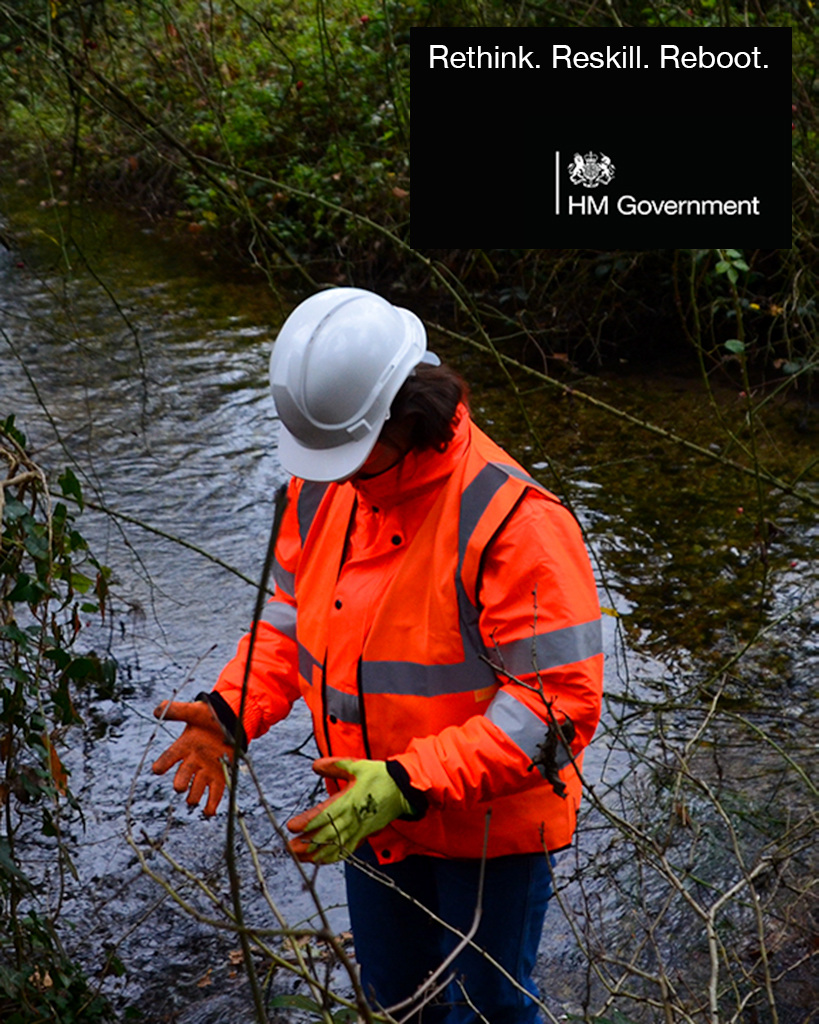
When encountering language and imagery from a blend of esoteric environmentalist and corporate inspirations, I hope a visitor to the HS2 Deep Listening website thinks it is real for a while. After learning about HS2, I want some people to keep changing their minds about whether or not this particular phase of HS2’s construction is an absurd waste of money. I offer documentation of some people at work recording sounds as well as a small library from sounds recorded in Denham Country Park near a tree protector camp in November 2020, before major construction ensues. I hope to further explore a question as to whether it is possible to bring personal connection and caring into the equation when making “observations” of nature while entrenched in a sector that generally treats elements of nature as economic commodities7. When listening to these gathered sounds, I want people to have a sliver of the experience that contractors must have had while making them: a moment intently listening to the many layers of a changing place.



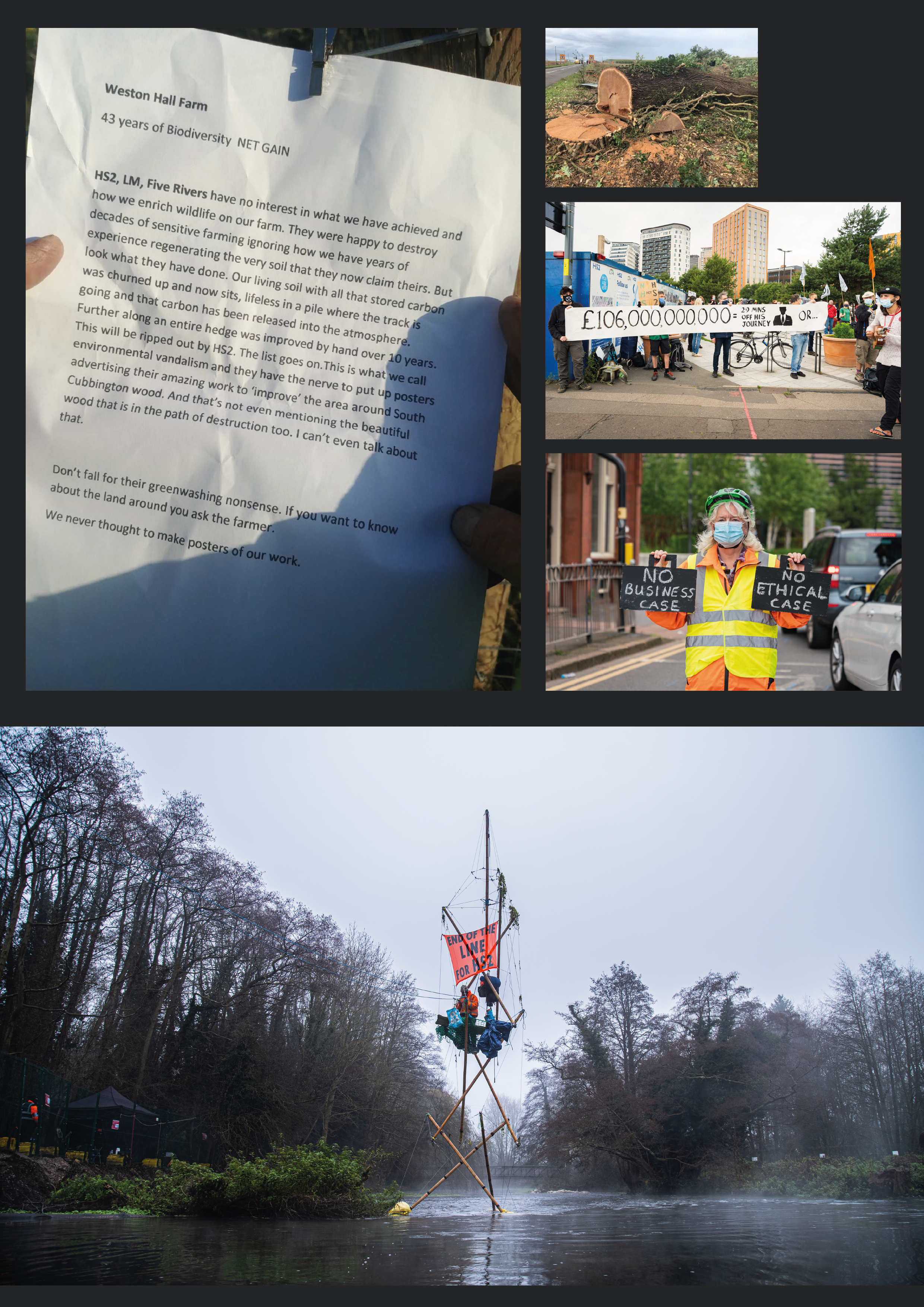
1. On World Environment Day, HS2 CEO salutes the 'Biggest environment project in Britain'Jun 5, 2020-last update. Available: https://mediacentre.hs2.org.uk/news/on-world-environment-day-hs2-ceo-salutes-the-biggest-environment-project-in-britain
2. Barkham, P., 2020, -02-02T16:40:30.000Z. Will HS2 really help cut the UK’s carbon footprint?. The Guardian. ISSN 0261-3077. Available: https://www.theguardian.com/uk-news/2020/feb/02/will-hs2-really-help-cut-the-uks-carbon-footprint
3. New Economics Foundation, 2019. HS2 will serve wealthier passengers and deliver more benefits to London than the North. Available: https://neweconomics.org/2019/03/hs2-will-serve-wealthier-passengers-and-deliver-more-benefits-to-london-than-the-north
4. HS2 Rebellion - An alliance of groups resisting HS2. Available: https://www.hs2rebellion.earth/
5. Topham, G., 2019, -08-21T16:41:51.000Z. HS2: how far has work got, and why might it be scrapped?. The Guardian. ISSN 0261-3077. Available: https://www.theguardian.com/uk-news/2019/aug/21/hs2-how-far-has-work-got-and-why-might-it-be-scrapped
6. Capra, F. & Luisi, P.L., 2018. The Systems View of Life: A Unifying Vision, Cambridge, MA: Cambridge University Press.
7. Bellacasa, María Puig de La, 2017. Matters of care: speculative ethics in more than human worlds, University of Minnesota press.
8. Barkham, P., 2020, -01-15T06:00:05.000Z. HS2 will destroy or damage hundreds of UK wildlife sites, says report. The Guardian. ISSN 0261-3077. Available: https://www.theguardian.com/uk-news/2020/jan/15/hs2-will-destroy-or-damage-hundreds-of-uk-wildlife-sites-report
[EXTERNAL SITE] ︎︎︎︎︎︎
︎︎︎︎︎︎
Living with Wildfire leaflet / poster


risograph printed with Earthbound Press in 2022 in north London.


This A3 size risograph leaflet reads like both a sales brochure and a manifesto on living with wildfire. Including photos from 2020’s SCU Lightning Complex Fire, haunting, sad, and beautiful.
COMING SOON:
